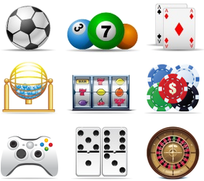 |
History of Bingo |
|
Some historians says that Bingo began as an Italian game. It seems that Bingo evolved from a traditional game of chance called Lotto.
Italian origins of Bingo seems true, as it appears in the records in the renaissance Italy, around 1530. Probably, it originates from an Italian lotto game named Lo Giuoco del Lotto d'Italia. |
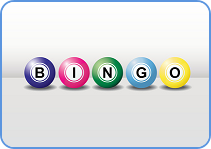
|
The word Lotto means “destiny or fate” in Italian. The first municipal lottery was introduced in Florence, Italy in 1530, was called La Lotto de Firenze and offered the money as a prize.
This idea of lotto proved to be very lucrative and thereafter various other Italian cities followed the same path, like Genoa and Venice. Please read more about lotto history in our special article about History of Lottery. Thank you.
This idea of lotto proved to be very lucrative and thereafter various other Italian cities followed the same path, like Genoa and Venice. Please read more about lotto history in our special article about History of Lottery. Thank you.
Original Italian Bingo
Originally, the bingo game was called “Beano” and it was named like this probably because little red dried beans were used instead of tokens. These were used to cover the numbers on what we would recognize today as Bingo tickets.
The original Italian game was very popular in the 1800s across Europe. The most popular form of Bingo was dividing the card into 100 squares, with nine vertical rows and three horizontal rows on each card. The three horizontal rows each contained five squares with numbers in them and four blank ones.
The numbers to be called were printed on wooden chips and tossed into a bag. The object of the game was to be the first to completely cover one of the three horizontal rows with the wooden chips. There were also blank squares on these cards were considered free squares much like the free square in the Bingo cards of today.
I remember from my childhood, we were playing this version of bingo with members of my family in long cold winter evenings.
I remember from my childhood, we were playing this version of bingo with members of my family in long cold winter evenings.
Europe invite Bingo
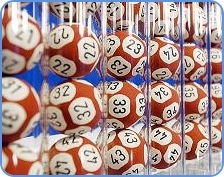
|
The game crossed the Alps into France. The French invented its own lotto version, where it came to be known as Le Lotto, and started to gain popularity there, in 1778.
The Le Lotto cards were split into about 27 squares (three horizontal and nine vertical). Horizontal rows had only five numbered squares and the vertical columns included numbers from one to ninety. Le Lotto was also played with chips, numbered from 1-90, so as to cover the squares. |
Each player was given one card and after numbers were pronounced, players would place chips on the relevant numbers. To win, players were needed to completely cover a horizontal row with chips. The 1st one to completely cover a row was proclaimed the winner.
This version of game is still played every Saturday in France in a form that is very similar to the Bingo that we all know today. It is a game played with tokens, a playing card and live called numbers.
This version of game is still played every Saturday in France in a form that is very similar to the Bingo that we all know today. It is a game played with tokens, a playing card and live called numbers.
There was another version of Lotto which was introduced in Germany. This time the players covered the squares not with chips, but with beans. The first player to cover his card would announce Beano, irrespective of whether a horizontal, vertical or diagonal row had been covered.
It is interested to notice that teachers in Germany used this version of lotto, to teach youngsters to mathematics, for example.
It is interested to notice that teachers in Germany used this version of lotto, to teach youngsters to mathematics, for example.
Bingo cross the Atlantic
|
It became a popular game in America and was played at a county fairs. It was played with dried beans, a rubber number stamp and cardboard. Instead of “Bingo!” winning players shouted “Beano”.
A caller drawing numbered discs from a cigar box, and players would mark their cards with beans to cover the numbers that were called out. When a player won, could shout "Beano"! This is the origin of 75 balls version of Bingo. It seems that the game to have first appeared probably in Georgia, but was soon popular throughout the American Midwest. |
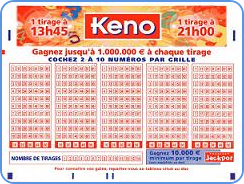
|
Beano was introduced in America by a traveler, who picked up the game on a trip to Germany sometime in that period. New York man, Mr. Edward Lowe, began licensing bingo cards in the 1930s, making it easy for operators to run games.
The license to his trademark "bingo" game was one dollar a year, which proved a clever marketing ploy to introduce Lowe's name into the marketplace.
The license to his trademark "bingo" game was one dollar a year, which proved a clever marketing ploy to introduce Lowe's name into the marketplace.
In 1929 there had been a rise in the popularity of bingo, as the decline of the stock-market and economic crisis, caused lots of people to turn to bingo as well as other forms of gambling, in order to earn additional income.
By the 1940s bingo games had sprung up all over the United States and Canada. Thousands of games were being played every week, mostly in church and civic gathering places.
By the 1940s bingo games had sprung up all over the United States and Canada. Thousands of games were being played every week, mostly in church and civic gathering places.
Bingo in modern times
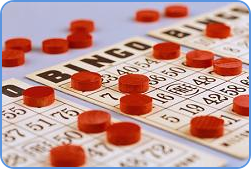
|
Today bingo games are available in many different formats and variations, and is enjoyed in bingo halls and online. Online bingo has hit the gaming and soft-gambling industry by storm over the past fifteen years.
Many people enjoy the social aspect of online bingo and networking with others who share the same passion for the game. Some online bingo providers invite players to join chats and forums, to share their bingo activity and excitement live online. |
Bingo is also the basis for online games sold through licensed lotteries companies. Tickets are sold like for lotto and other lottery games, and the player get a receipt with chosen personal numbers, like a bingo card.
For example, Polish National Lottery company sell bingo tickets, at lottery sales points, for similar game called KENO, and draws are held every five minutes.
For example, Polish National Lottery company sell bingo tickets, at lottery sales points, for similar game called KENO, and draws are held every five minutes.
Is Keno other game than Bingo?
|
Keno name was popular in 19th century and was the original name for Bingo. Illegal "Keno" lottery operators used this name to fool government authorities into thinking that, Keno is a non-lottery game. Then, playing Bingo was legal but, playing the lottery games was not.
Nowadays, lottery versions of Keno is very similar and in some cases, really identical game like Bingo, with the same rules. On the right picture: Polish Keno blank playslip coupon, which is in fact a 70-balls version of Bingo game. Another form of bingo are also instant scratch card games, which are especially popular in the United Kingdom and Canada. In scratch cards, the numbers are pre-drawn for each card and hidden until the card is scratched. |
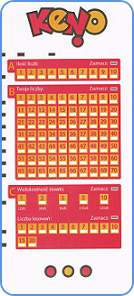
|
Please visit our special sub-page to see Bingo Scratch Card online game. You may register and play online.
There is $5,- welcome bonus for new players. Please check it out.
There is $5,- welcome bonus for new players. Please check it out.
Bingo is an easy game to play (even if you are disabled) and also because the progressive jackpots in an online game of bingo are much larger than in a bingo hall.
Bingo at Home
The original "Bingo At Home" hosted by Monty Hall, and sponsored by Chase & Sanborn Coffee.
Amazing! It's really history of Bingo!.
If you plan on staying awake through the whole clip, better have some coffee cup, close to you.
Amazing! It's really history of Bingo!.
If you plan on staying awake through the whole clip, better have some coffee cup, close to you.
